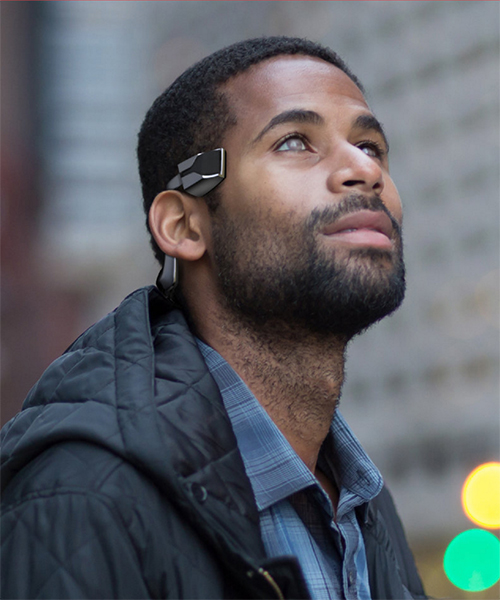the nomad sensor is a headset concept by industrial design student jorge paez that hopes to tackle some of the obstacles met by those with vision impairment in their day to day life. the proposed device would empower people with limited vision, decreasing dependency and improving the psychological and psychosocial impacts of sight loss.
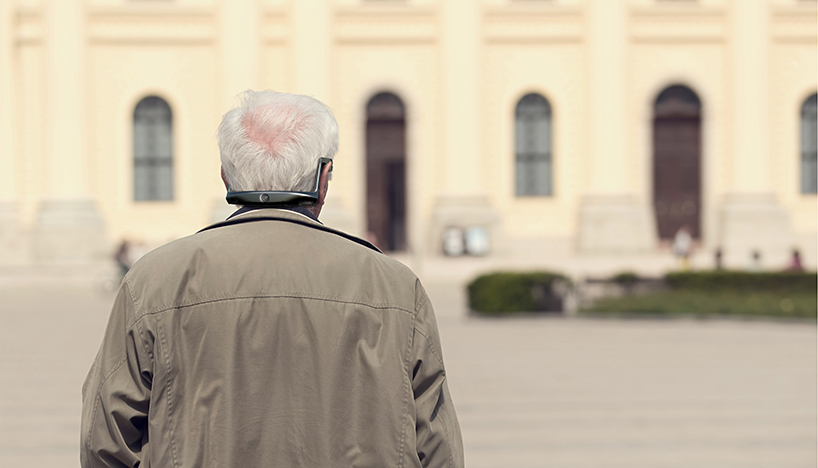
the proposed device would empower people with limited vision
‘due to the aging population of the baby boomers, and other factors, it is projected that the number of people living with a visual impairment will more than double in the next 30 years,’ says jorge paez, the mind behind the headset. ‘even though technology has advanced rapidly, living with a visual impairment is still a monumental obstacle.’ the nomad works by utilizing four LiDAR proximity sensors, similar to the ones used on autonomous vehicles. these four sensors and a 180° rear mounted camera detect obstacles that the user would otherwise not see.

the nomad decreases dependency and improves the psychological and psychosocial impacts of vision loss
all this is mounted on a pair of specially design bone conducting headphones. the benefit of bone conducting headphones is that they do not impede on the user’s hearing, which is crucial for those who are visually impaired. by conducting sound through the temples, the ears are free from obstacles. when the nomad detects an oncoming obstacle the user is presented with a series of dings, which indicate to them where the obstacle is. as the obstacle gets closer the dings increase in speed, indicating the obstacle’s distance.
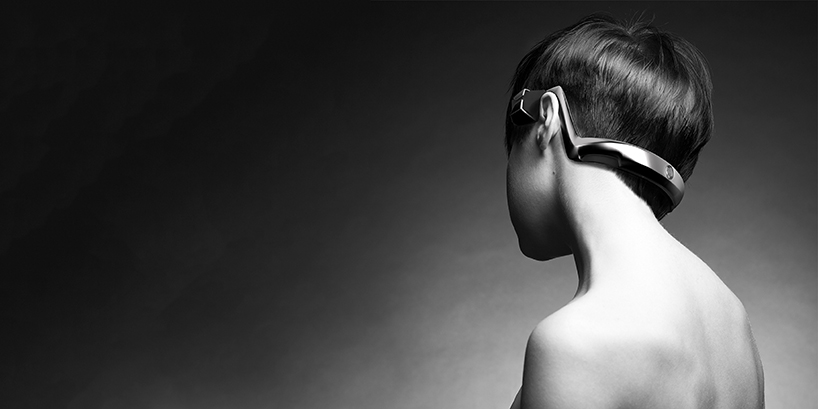
the nomad works by utilizing four LiDAR proximity sensors
on top of indicating obstacles, nomad would guide users through their physical environment. by utilizing blindsquare — an app much like google maps specifically designed for people with visual impairments — nomad is able to paint a picture of the user’s environment. blindsquare provides the user with information about their route, such as on coming crosswalks and different landmarks on the way. the advantage of blindsquare is its ability to give directions where traditional GPS can’t: indoors. by combining the power of blindsqaure and nomad, users are able to go where they please with peace of mind.
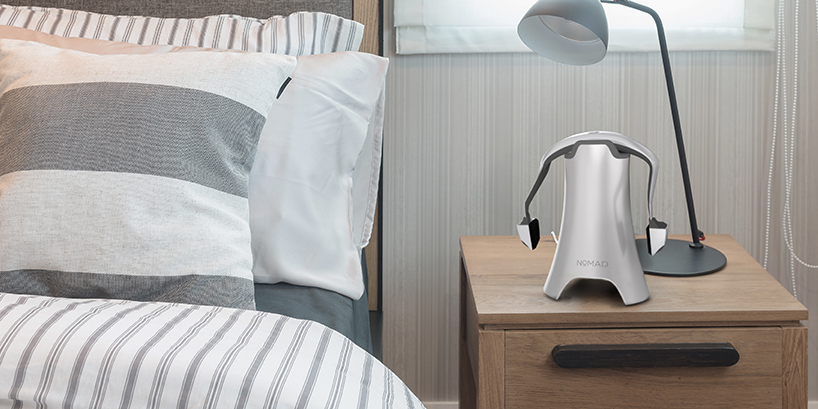
a 180° rear mounted camera detects obstacles that the user would otherwise not see.
nomad’s durable design is attributed to its ABS housings. all the electronics are housed within injection molded ABS shells, which protect them from harmful UVA lights as well as moisture and harsh conditions. the interior shell is covered in a water and oil resistant fabric to ensure comfort when on the head. all sensors are placed in reinforced areas to reduce damage from every day use. the front facing sensors are attached by a simple screw mechanism, which allows for quick and easy repairs in case of emergencies.
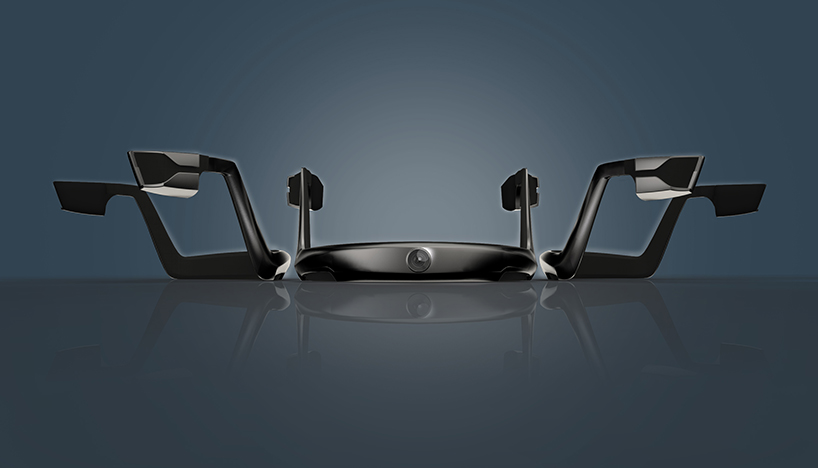
nomad’s durable design is attributed to its ABS housings
on top of all this, paez’s concept also includes a digital assistant, similar to google home or the amazon echo, that would assist users with obtaining public transportation tickets among other things. users would have tickets sent to their phone using a simple voice command.
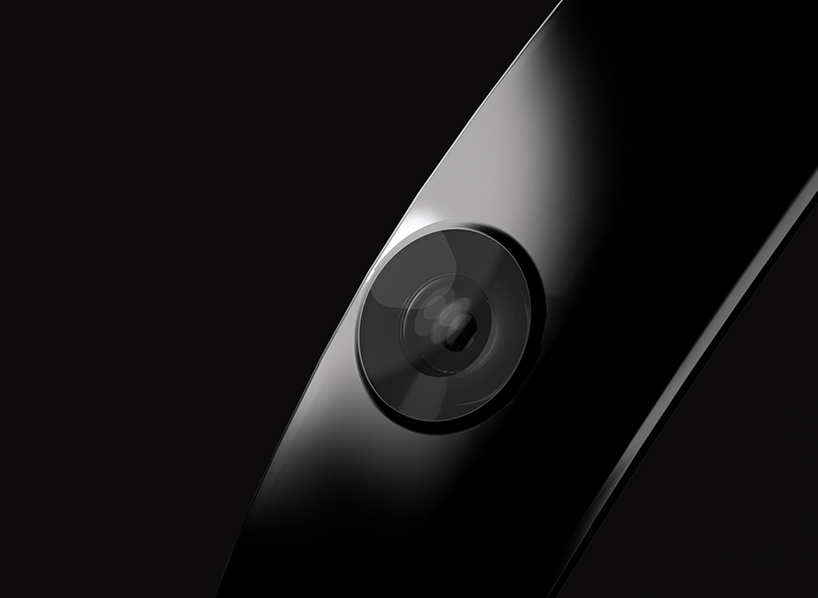
nomad’s 180 degree rear camera detects obstacles behind the user

two side facing proximity sensors detect hazardous obstacles to the user
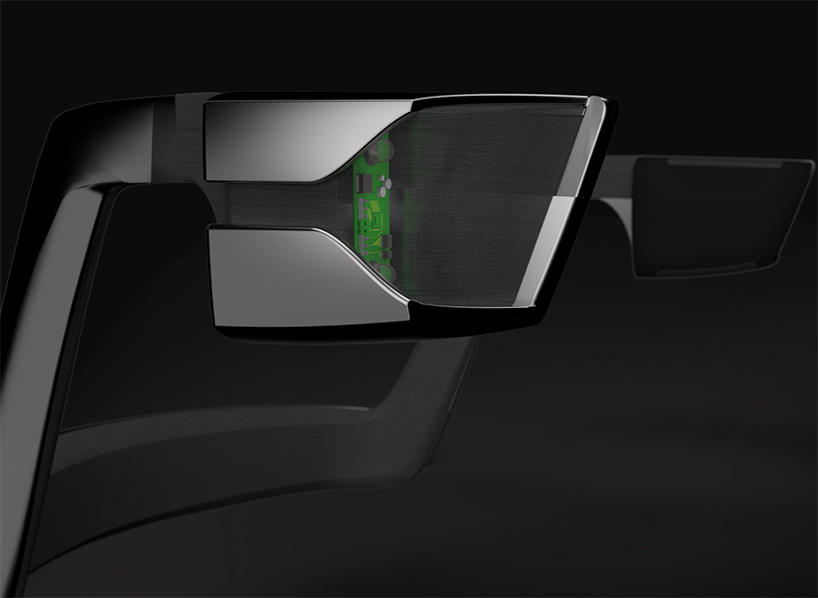
all the electronics are housed within injection molded ABS shells
designboom has received this project from our ‘DIY submissions‘ feature, where we welcome our readers to submit their own work for publication. see more project submissions from our readers here.
edited by: peter corboy | designboom
